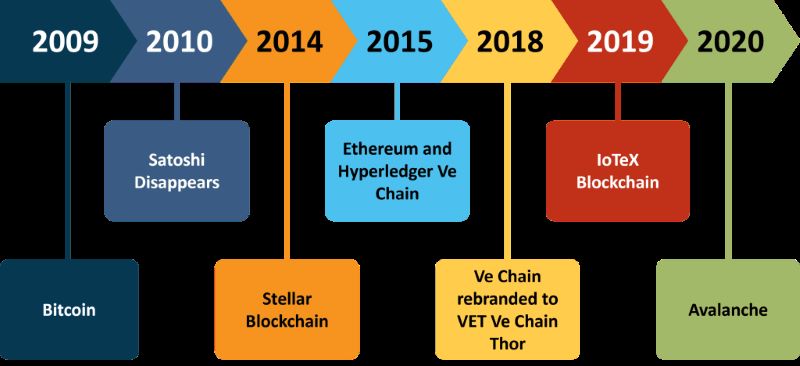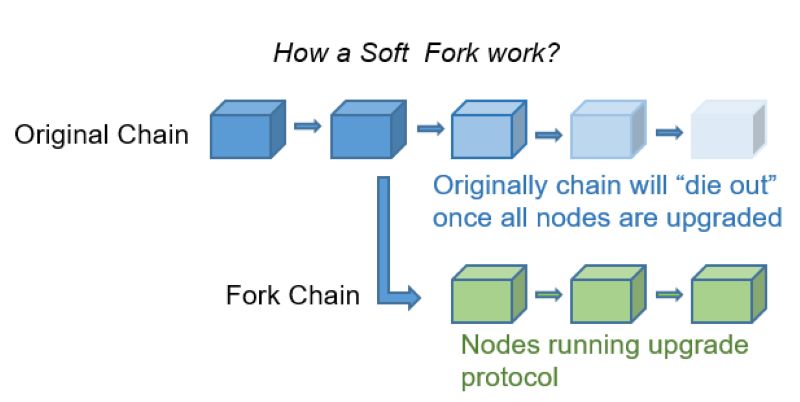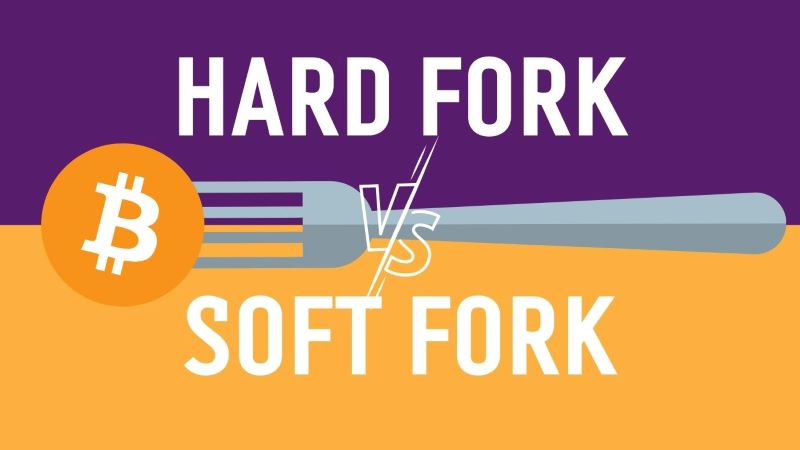Can You Rewrite Blockchain History? Exploring Data Immutability
Blockchain is known as the digital ledger of trust, but one question nags the curious mind: Can you change data on blockchain? This is not just tech chatter. It digs deep into the core of blockchain technology – immutability. Stick with me as I uncover the layers of blockchain security that keep data untouched, the hushed whispers about when and how this digital fortress can be breached, and the thrilling dance of smart contracts and updates. I’ll walk you through the iron-clad hash functions and ledger finality that preserve the past, then pivot to the gritty details of 51% attacks and hard forks that challenge the norm. Let’s dive into the fascinating mechanics of this revolutionary tech and explore whether blockchain’s history is as set in stone as it may seem.
Understanding the Immutable Nature of Blockchain
Explaining Hash Functions and Ledger Finality
Think of a blockchain as a book that no one can erase not even a single word from once written. Your name, written there, sticks forever. That’s how blockchain stores data. Each piece of data gets locked by a math puzzle called a hash function. Solving it checks the data and locks it tight.
When new data comes in, it gets its own puzzle. All puzzles link together in a chain. Change the data, the puzzle’s solution won’t match. It’s like trying to fit a round peg in a square hole. Everyone can see it’s wrong. This is what we call ledger finality. Once data is in, it stays true and unchanged.
The Role of Consensus Mechanisms in Maintaining Data Integrity
Now, imagine a room full of people, each with a copy of that book. That’s the blockchain network, full of copies. To add something new, most people must agree. This agreement is called consensus. It keeps the data the same in all books.
Different groups use different rules to agree. Some make it a race to solve a hard math problem, like a game. Others let only a few trusted people decide. But with any rule, most must agree to make the change. It’s like a team sport, where the team decides the next play together.

Can you change data on a blockchain? It’s tough. You’d have to convince most people in the room to agree to rewrite their books. And people are good at spotting cheats. They want the blockchain clean and true. So changing old data? It’s a no-go. But making new entries that correct the old ones is possible.
We call such changes ‘hard forks’ or ‘soft forks’ if they change the rules but that’s a tale for another time. These methods are not for easy fixes. They are a whole game change. Everyone must choose to follow along. If not, the team splits into new teams, each with different playbooks.
Trust in blockchain is all about making sure no one tricks the system. The math puzzles, the team agreement, they keep our data safe. Can you edit transactions on a blockchain? Only if you convince the whole network it’s the right play. And that’s no small task.
Remember that rewriting history on the blockchain is almost impossible. Its power lies in staying unchanged. Our team’s goal is to keep it that way. It’s what makes blockchain special, and why people believe in it. It’s a team sport, and we’re all about playing fair and keeping the game straight.
The Circumstances Under Which Blockchain Data Can Be Altered
What Constitutes a 51% Attack and Its Repercussions
When more than half of a blockchain’s computing power is controlled by one group, a 51% attack happens. This allows them to stop new transactions and even change old ones. It’s like suddenly owning the only key to a city. They could rule it as they wish, deciding which doors stay locked.
This scares people in the blockchain world. Why? Because blockchains should be tamper-proof by design. But with so much power, a group can threaten the trust in the blockchain. They could double-spend coins, which is like spending the same money twice – like using a magic wallet in the real world. Luckily, this doesn’t happen often. It’s costly and hard to pull off, but it’s a danger we take seriously.
The Processes Involved in Hard Forks and Rollbacks
Now, about changing the blockchain, think of hard forks as a big community vote. People decide if they want to update the rules of the blockchain. It is like when a game’s rules change and players have to agree to keep playing.
Some want new rules. Others want the old ones. A hard fork means the blockchain splits in two. Each side has its version of the story of every coin. It’s a bit like a family tree where one family becomes two.
Rollbacks are like saying, “Oops, that didn’t happen!” If something big and bad happens, like a bug in a smart contract, a rollback can undo it. Everyone has to agree that it’s better to turn back time though. It’s like a big group deciding to erase a part of their shared diary.
But here’s the thing – these actions are rare. That’s because we all value the trust we have in blockchain. It’s built to be a rock. A rock made of many stones, held together by the trust of those who use and build on it. Changes aren’t made lightly. They’re made to protect everyone using the blockchain from harm and to keep all blocks standing strong.
Blockchain isn’t just tech. It’s a promise that what we build stays as we built it, sturdy and safe, for all to trust and use.
Smart Contracts and Update Mechanisms
The Intricacies of Editing Smart Contract Code
Can you change data on a blockchain? If it’s smart contract code, sometimes. But it’s not simple. Smart contracts are like vending machines. You put something in, you get something out. They follow set rules on the blockchain. But, if we need to fix a bug or make updates, we face a tough job. To change the code, we must reach a broad agreement. We do this because trust is key. Everyone using the blockchain must agree to the change. We call this consensus.
Why is this hard? Well, blockchain’s strength is that it doesn’t change easily. Imagine writing in wet cement. Once it dries, it’s tough to change without a mess. That’s the immutable nature of blockchain. It’s what makes it special. It’s why people trust it to keep their data safe.
But what if someone finds a mistake in the smart contract? Here’s where we tread carefully. With broad user agreement, we can deploy a new contract. It can take over from the old one. This doesn’t erase the old code. It just moves us forward.
Soft Fork Updates: Treading the Fine Line Between Correction and Immutability
Talk of updates leads us to soft forks. They are like gentle bends in a river. They let us make small changes without breaking the rules. With soft forks, old and new rules can exist at the same time. This is important. We want to improve without losing the blockchain alteration possibilities that keep everyone on the same page.
But even soft forks need most people to agree. This is called node consensus for data amendment. Think of it as a group decision. If most agree, then the blockchain can update. It’s like adding an extra rule to a game that everyone already plays.
But remember, while we can tweak things, we can’t just edit transactions on blockchain willy-nilly. The blockchain security protocols are built to prevent fraud. They make sure no one cheats the system. So, we use soft fork updates carefully. We do it to keep our blockchain honest and reliable, not to rewrite history.
Making changes on a blockchain is like steering a ship. We must be slow and careful. We respect the ledger historical data in blockchain like a captain respects the sea. Every change must keep our ship afloat and on course. The immutable nature of blockchain is our guiding star in this vast digital ocean.
The Future of Blockchain Revisions and Security Measures
Tightening Blockchain Security Protocols to Prevent Unauthorized Changes
Let’s talk about keeping our blockchain safe and sound. Imagine your blockchain like a digital fortress. The walls and moat? Those are your security protocols. They keep the data safe from bad folks trying to mess with it. We call this the blockchain’s immutable nature. It means once something’s in there, you can’t change it. It’s locked in tight.
Now, some might ask, can we ever edit transactions on blockchain? Here’s the straight-up answer: no, not the way you might think. Blockchain technology immutability doesn’t play. Once data is in, altering recorded data on distributed ledgers is a no-go. It’s the system’s tamper-proof characteristic that keeps our trust in it high.
Why’s this cool for us? Simple. It stops double-dealing and data mishaps, keeping things honest. To mess with blockchain data, you’d need more than half the network’s power. We call this a 51% attack. But pulling it off is tough and costly, which is good for all of us.
Evolving Consensus Mechanisms and Their Impact on Update Dynamics
Now, for the behind-the-scenes magic – consensus mechanisms. They’re like the round table where all the nodes get to say, “Yep, this data’s legit!” or “Nope, try again!”. These mechanisms make sure that when we update information on blockchain platforms, we all agree.
But what happens when we need a change, like a do-over for a mistake? In the land of blockchains, we’ve got smart contracts data revision as our knight in shining armor. Missteps in smart contract code happen. But here’s the deal: editing them isn’t about changing past stuff; it’s about agreeing on a new path forward. We do this in two main ways: hard forks and soft forks.

Hard forks in blockchain? Think of them like picking a new road on a map. Now, two paths exist: old and new. Sometimes we need them to fix big issues or add cool new features. And soft forks? They’re more like squeezing past a roadblock without changing lanes. Both need the nodes consensus to roll.
Lastly, we’ve got updates and version upgrades. They keep our blockchain shipshape as it sails forward. Sure, they can be tricky, but they make sure we all stay on course together.
So, remember, blockchain’s append-only structure is here to stay. It’s what makes our system tough as nails against fraud and sneaky changes. Stay tuned for how we keep making it even rock-solid than it already is!
In this post, we dove into the solid core of blockchain technology. We explored how hash functions and consensus methods keep the blockchain ledger safe and fixed. I also peeled back the layers on altering blockchain data, laying out the facts on 51% attacks and the steps for hard forks and rollbacks.
We shone a light on smart contracts, explaining how their code can be tweaked, and how soft fork updates walk the line of change without shaking the foundation. Finally, I shared insights on beefing up blockchain security and how new consensus methods might shape future updates.
With each piece of the blockchain puzzle, our grasp of this tech grows. Stay sharp and keen on how these systems work. The rewards are knowing where we’re headed and how to keep our digital assets safe. That’s the golden ticket in our tech-savvy world. Keep learning, keep questioning, and as always, stay secure out there!
Q&A :
Can data on a blockchain be altered once it’s been entered?
No, one of the core principles of blockchain technology is its immutability. Once data has been added to the blockchain, it is nearly impossible to change. This is because each block contains a cryptographic hash of the previous one, creating a linked chain that secures the information and prevents alteration.
What happens if incorrect data is entered into a blockchain?
If incorrect data enters a blockchain, it cannot be directly changed. The blockchain’s design means that any entered data is permanent. However, in practical scenarios, the correction would typically involve appending new transactions to reflect the correct information, effectively acknowledging the mistake without erasing it.
Is there any circumstance where blockchain data can be edited?
The general rule is that once data is written to a blockchain, it cannot be edited or deleted. However, there are scenarios involving ‘hard forks’ where the protocol of a blockchain is altered and the history of transactions can effectively be changed. This is rare, complex, usually involves wide consensus among users, and can lead to a split into two separate blockchains.
How does the immutability of blockchain enhance security?
The immutability of blockchain greatly enhances its security because it makes it nearly impenetrable to tampering. Since each block on the chain is linked to the previous one through cryptographic hashes, altering any piece of information would require changing all subsequent blocks, which is computationally infeasible, thus deterring fraud and ensuring data integrity.
Can smart contracts on a blockchain be changed?
Smart contracts are self-executing contracts with terms directly written into lines of code. Typically, once deployed, the terms of a smart contract cannot be changed. However, there are methods to introduce updatable smart contracts but these usually involve additional layers or built-in functions that allow changes by predefined rules or governance systems.

RELATED POSTS
BulbaSwap Airdrop: A unique investment opportunity in DeFi
BulbaSwap, a decentralized exchange (DEX)...
Moonwalk Fitness Airdrop – Guide to Participate and Receive Rewards
Moonwalk Fitness Airdrop offers a...
What is Make Frens Airdrop? How to participate
Make Frens Airdrop is an...
DePIN Alliance Airdrop – Extremely HOT VTIS 2024 Event
DePIN Alliance Airdrop – Highlight...
Peaq Crypto: A disruptive Blockchain platform
Peaq Crypto, a high-performance layer...
Pump.fun: The Easy Way to Launch Your Own Memecoin
Looking to create your own...
What is KYC in Crypto? The Key to safer and transparent trading
What is KYC in Crypto...
Near coin Revolution: Is this the Crypto you’ve been waiting for?
Near Coin is making waves...
Bitlayer Airdrop and the opportunity to earn token exchange points
The Bitlayer Airdrop is not...
Naoris Protocol Airdrop: Get free NAORIS Tokens
Naoris Protocol is an advanced...
DeepSeek vs ChatGPT – Who is the AI Chatbot King of 2025?
DeepSeek vs ChatGPT – The...
Exploring the Growth of the Blockchain Technology Market in 2024
The blockchain technology market is...
Tokenization in Education: Can Blockchain Revolutionize Learning Access?
Tokenization of educational resources with...
What is Dapp? The future of U2U decentralized applications
Are you ready to explore...
What is ETH Analysis? Trends, Predictions, and What’s Next for Ethereum
Ever wondered what makes Ethereum...
Launch of Grass Season 2: Exciting Airdrop opportunities
Following the remarkable success of...